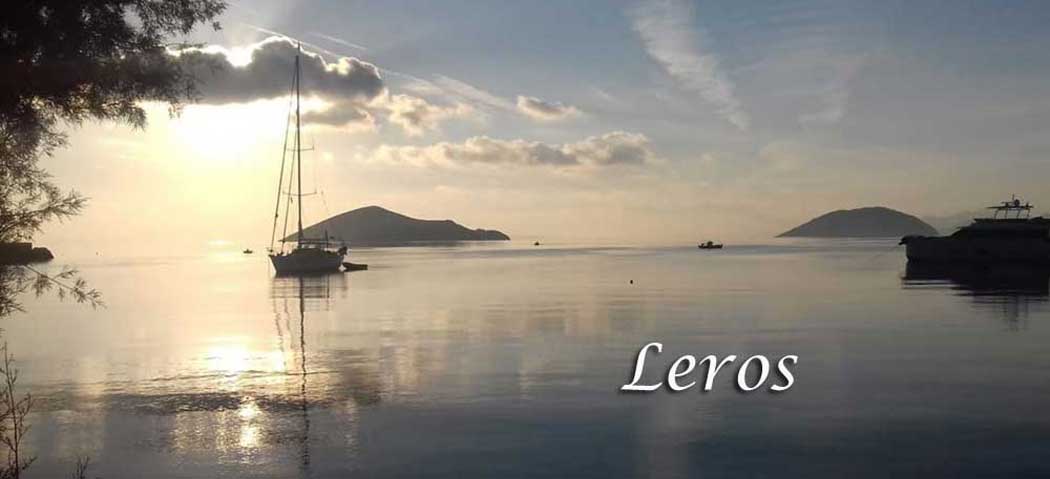What are the best places to visit in Leros ?
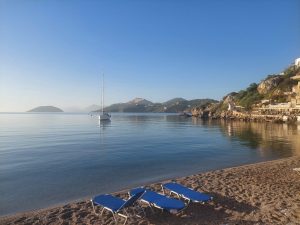
With a good network of roads and lanes it is perfect for exploring the island by motor scooter of car.
The most popular places and beaches to visit are Partheni and Blefouti in the north, Gourna, Kokali and Ayia Isidoros on the west side of the island and the big bay of Alinda in the central east part of the island, with Panagies and Crithoni beaches. Travelling further southeast, lies the pretty port of Agia Marina which is ten minutes walk to Platanos, the heart of the island.
From Platanos you can climb the steps to the top of the hill and visit the famous Byzantine castle of Panagia, built by the Emperor, Alexius Komninos in the 11th century AD. Five minutes walk, south of 
Moving further south you will reach the beautiful beach of Vromolithos. At a distance of approximately 2km further south, you will come to the main port of Leros, Laki.
From here the ferry boats link to Piraeus, Patmos, Kalymnos, Kos, Symi, Nysssiros, Rhodes and other islands of the Dodecanese. 3 km south of Laki, you reach the most southern point of Leros, the bay of Xirokampos with a nice beach shaded by tamarisk trees and the famous small church of Maria of the Crabs which is built in a cave.
Fortresses
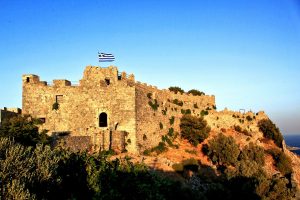
The fortress upon the hill was meant to protect the population that took refuge within its walls in times of pirate raids and pillage. In times of peace, the inhabitants dwelled in houses scattered around the fort – the vestiges of some 180 such houses still visible.
Within the walls of the fortress, one comes across the Monastery of Panagia Kyra (our Lady of the Fortress), ornamented with numerous Byzantine frescoes, also featuring an interesting collection of archaeological and Byzantine – ecclesiastical objects – icons, manuscripts, baptistery basin and a mortuary shroud for the Holy Week services. There seems to be no end to the local lore and beliefs about the miraculous powers of the icon of the Virgin.
Bourtzi
At the southern entrance of the bay of Agia Marina dominates Bourtzi (or Brutzi as the locals call it), which, unlike Nafplio, is a sea fortress, quite elevated, which is washed by the sea and is not built on an island.
Monasteries and Churches
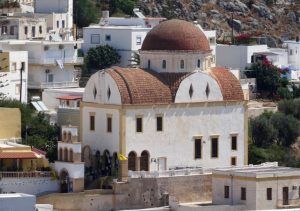
In Lakki, look for the church of Saint John the Evangelist (Aghios Ioannis Theologos), one of the most interesting of its kind in the whole Dodecanese, featuring some excellent 11th century A.C. mosaics.
Within the wider area of Partheni, there lies the church of Aghios Georghios (St. George), built in the 10th century A.C. with ancient material – possibly remnants of the ancient temple of Diana.
On the seafront, northwards, there lies the church of Aghia Kioura or Matrona, definitely worth visiting for a closer look at the beautiful frescoes, created by political convicts in exile during the dictatorship years (1967 – 1974) but also at the older icons kept in the church.
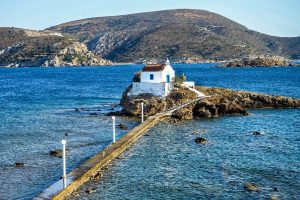
On the seabed, right next to the rock featuring this church, one can see the vestiges of an ancient shrine.
More to the south, right along the seafront road going past Gourna, one comes across the small church of Panaghia Gourlomata (literally, the Virgin with the Bulging Eyes), featuring some remarkable frescoes and built here, near Drymonas, in the 14th century A.C, of materials taken from the ruins of an ancient construction nearby.
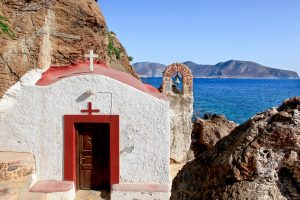
The church was actually built on the rocks of the coast, on a location where – tradition has it – a fisherman looking for crabs accidentally came across the icon of Holy Mary, hidden in a fissure of the rock. Hard to get to at first sight, the church may actually be accessed through the many steps carved in and amongst the rocks.
